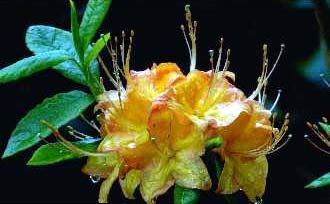Weeds may detract from the appearance of a lawn, but that’s the least of your problems. Weeds need the same moisture and nutrients that desirable grasses do. If weeds are flourishing, then your lawn is being deprived.
Besides being unsightly, an outbreak of weeds is also a sign that something is wrong with the lawn. Vigorous, healthy turf has such a dense weave of roots that few weeds ever have a chance of getting started. The first step in ridding a lawn of weeds is understanding what makes a lawn healthy.
A Struggle for Space, Moisture, and Food
There's nothing natural about a well-groomed lawn. If you walk through a field of wild grass in midsummer, most of the grass tips will be up to your knees. Like other plants, grasses use their foliage to absorb sunlight and nutrients and, through photosynthesis, to produce food that feeds the plant. Every time you mow a lawn, you deprive it of foliage that would otherwise be used to nourish and sustain it. In order to make up for this loss, you have to devote special attention to watering and fertilizing the lawn.
In a typical lawn, there is only one or at most a few species of grass, and the ground is seeded so thickly that each individual plant is competing with its neighbors for air and light. For this reason, you must compensate by periodically aerating the soil, by removing thatch (an accumulated mat of dead grass leaves and roots that can choke the soil surface), and by removing weeds.
Encouraging Healthy Growth
Some soils are too acidic for good lawn grass growth. Neutral soil is best in most cases. If your soil is acidic, you can help neutralize it by adding lime. Some weeds, such as sheep sorrel, flourish only in acidic soil and will disappear as soon as corrective measures are taken.
Next, make sure that your lawn is getting enough nutrients. Yellowish, stunted grass, or the presence of weeds such as speedwell, chickweed, and sage, usually indicate a lack of soil fertility. Commercial lawn fertilizers list on the package the amount of available nitrogen. Most lawn grasses need from 2 to 4 pounds of nitrogen per 1,000 square feet of lawn annually. Best results are obtained by spreading out the fertilizer application over 2 to 3 feedings during the growing season.
Watering is high on the list of lawn maintenance tasks. The frequency of watering depends both on the weather and on soil type. In hot, dry weather, a lawn can easily consume an inch of water per week. Sandy soils, which drain rapidly, need more frequent watering than do clay soils.
Finally, mow regularly. Be sure not to mow too closely, however, as most lawn grasses will be unable to develop a truly healthy, well-knit root system if consistently cut lower than 2 inches.
Attacking Weeds
As your lawn becomes healthier, weeds will become less of a problem, but they won't go away completely. Hand weeding and chemical controls are the two methods weed removal.
Hand weeding is the safest and most effective method. Begin early in the growing season to save yourself work later; it's much easier to eliminate weeds when they're young. Shortly after watering is best, as weeds can be uprooted with less difficulty from moist soil. Be sure to dig out as much of the root as possible, since many weeds can reproduce from a single piece of underground root.
Chemical Methods
Chemical herbicides can work wonders, but they bring with them so many problems that they should be used sparingly. Chemicals that kill weeds will also kill most garden plants, and are likewise toxic to both humans and animals. Be very careful when using herbicides; follow the directions on the package closely.
STEPS TO COMBATING WEEDS IN THE GARDEN
Save yourself work next year by stopping weeds before they go to seed. The earlier you remove weeds, the better. Weed seeds can lie dormant in the soil for decades, waiting for an opportunity to sprout.
Dig out weeds with deep taproots such as dandelion and plantain. The younger the weed, the shallower the root and the easier it will be to remove. Use a sharp trowel or asparagus knife to remove the root ball, then shake off excess soil and refill the hole.
Weeds that spread by runners - such as yarrow, red sorrel, creeping buttercup, and ground ivy - will crowd and eventually strangle grass roots. It's particularly important to catch these weeds early. Use a garden fork to remove large infestations.
TIPS: AERATION
Just as important as the availability of moisture and nutrients to lawn health is good air circulation. You can rent an aerating machine that will remove hundreds of 2- to 3-inch cores of earth from compacted soil.
Prevent over-spraying when using chemical weed killers. The best method for most lawn weeds is to use a "weed wand" or other spot applicator. These tools will help minimize the danger of harming other garden plants.


